This Week At Angama #80
16 August 2019 | This Week at Angama | Adam Bannister
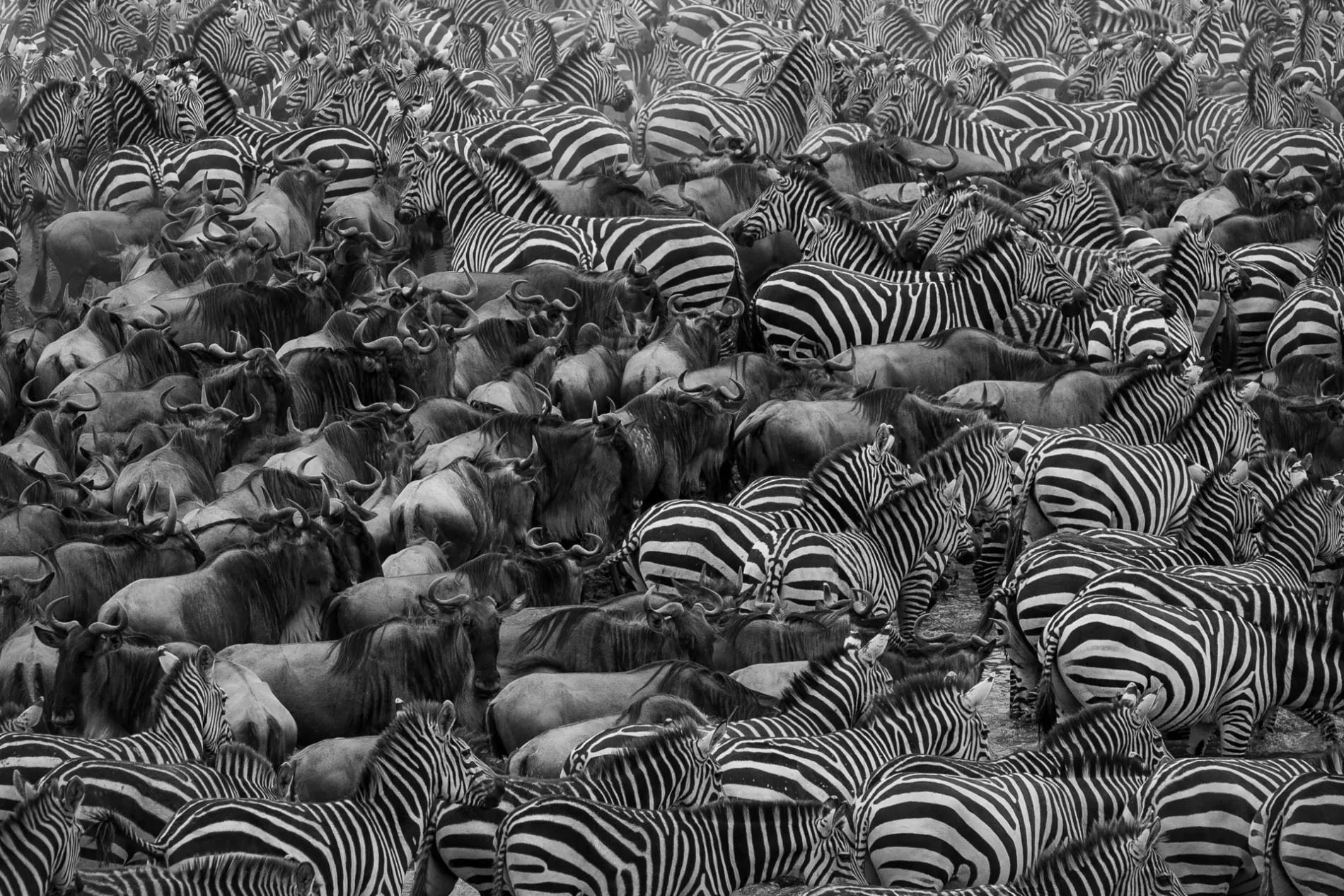
This blog series attempts to document change, interactions, behaviour and most importantly provide a snapshot on what is happening in the Mara right now. When I go out to photograph for this blog series, I am not necessarily looking for beautiful images; I am looking to document diversity. [f 8.0, 1/320, ISO 800, -0.33]
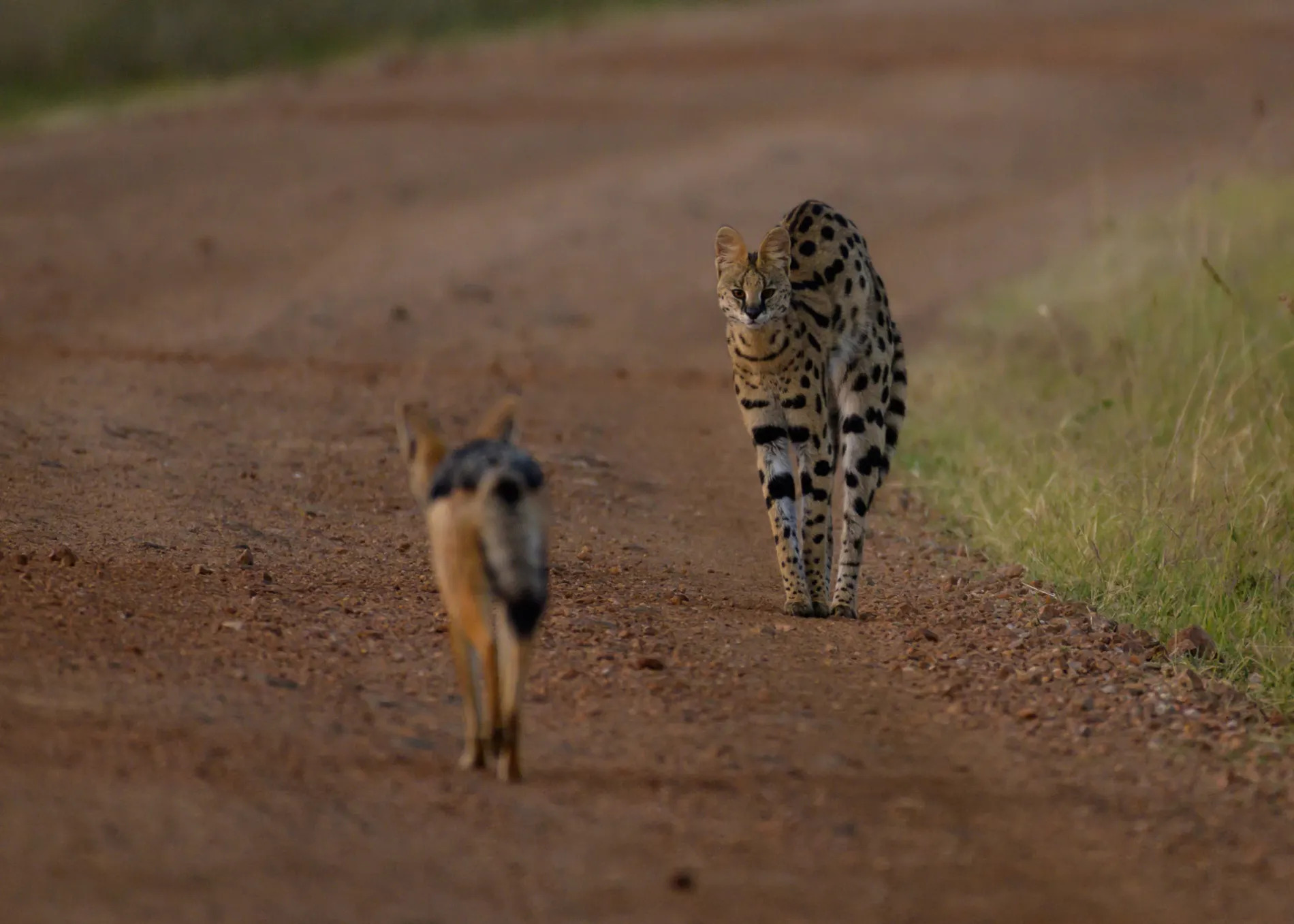
Take for example one of the most unusual encounters I have ever witnessed. I was the first car in the park and the sun had barely risen, when in front of me, in the middle of the road, was a most unlikely stand-off. A black-backed jackal and a serval were facing off – a flick of an ear in the long grass indicated to me that the serval must have been protecting another serval – hence why it was not simply turning and running away. The stand-off was intriguing as the jackal circled around the serval, again and again. The serval puffed itself up, hissing and spitting. The entire sighting must have lasted only about five minutes. Eventually, the jackal backed off and continued on its way down the road. I smiled to myself. Whatever happened on the rest of the drive, those five unlikely minutes would have made it worthwhile. [f 5.6, 1/160, ISO 1600, -0.67]
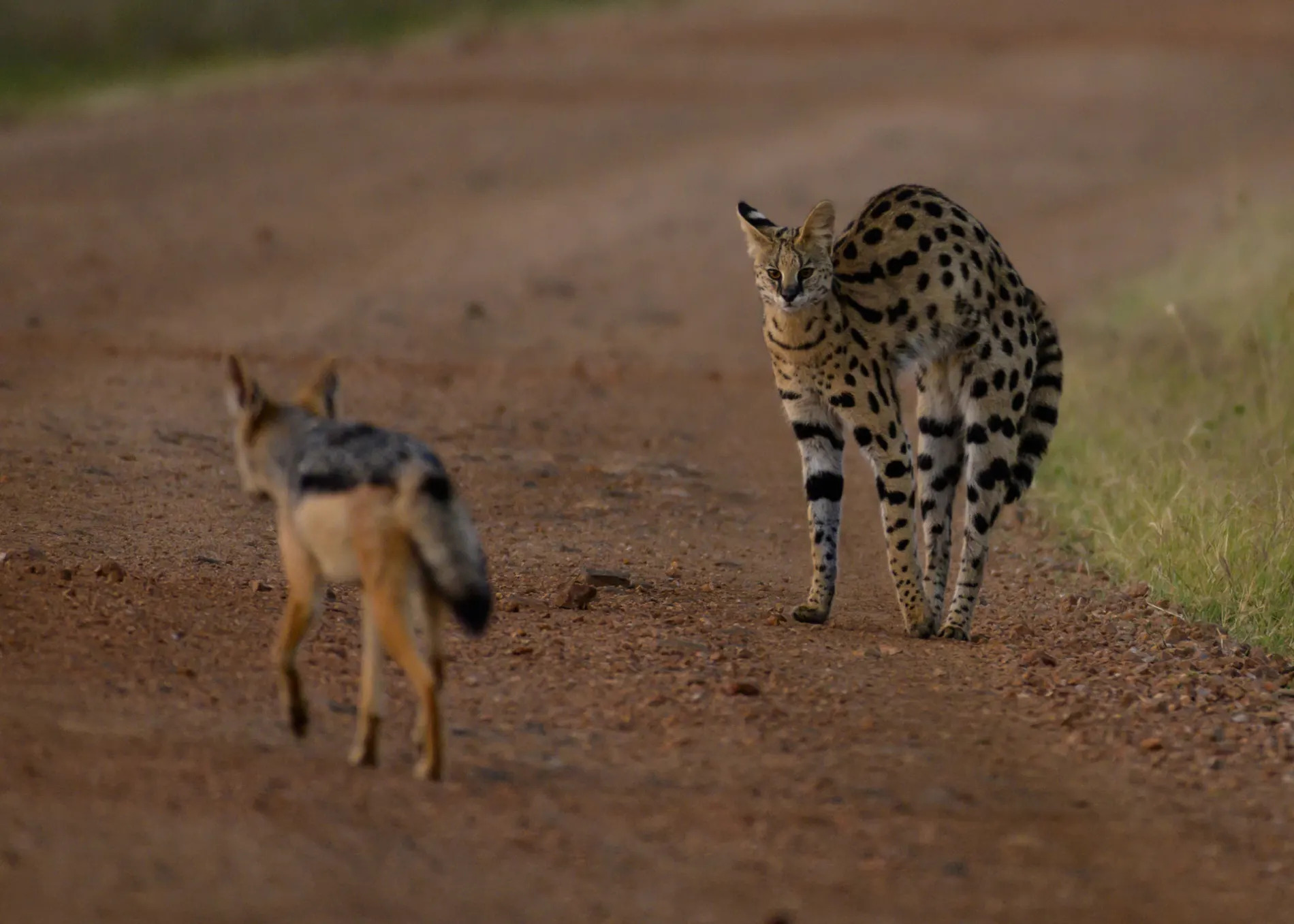
[f 5.6, 1/160, ISO 1600, -0.67]
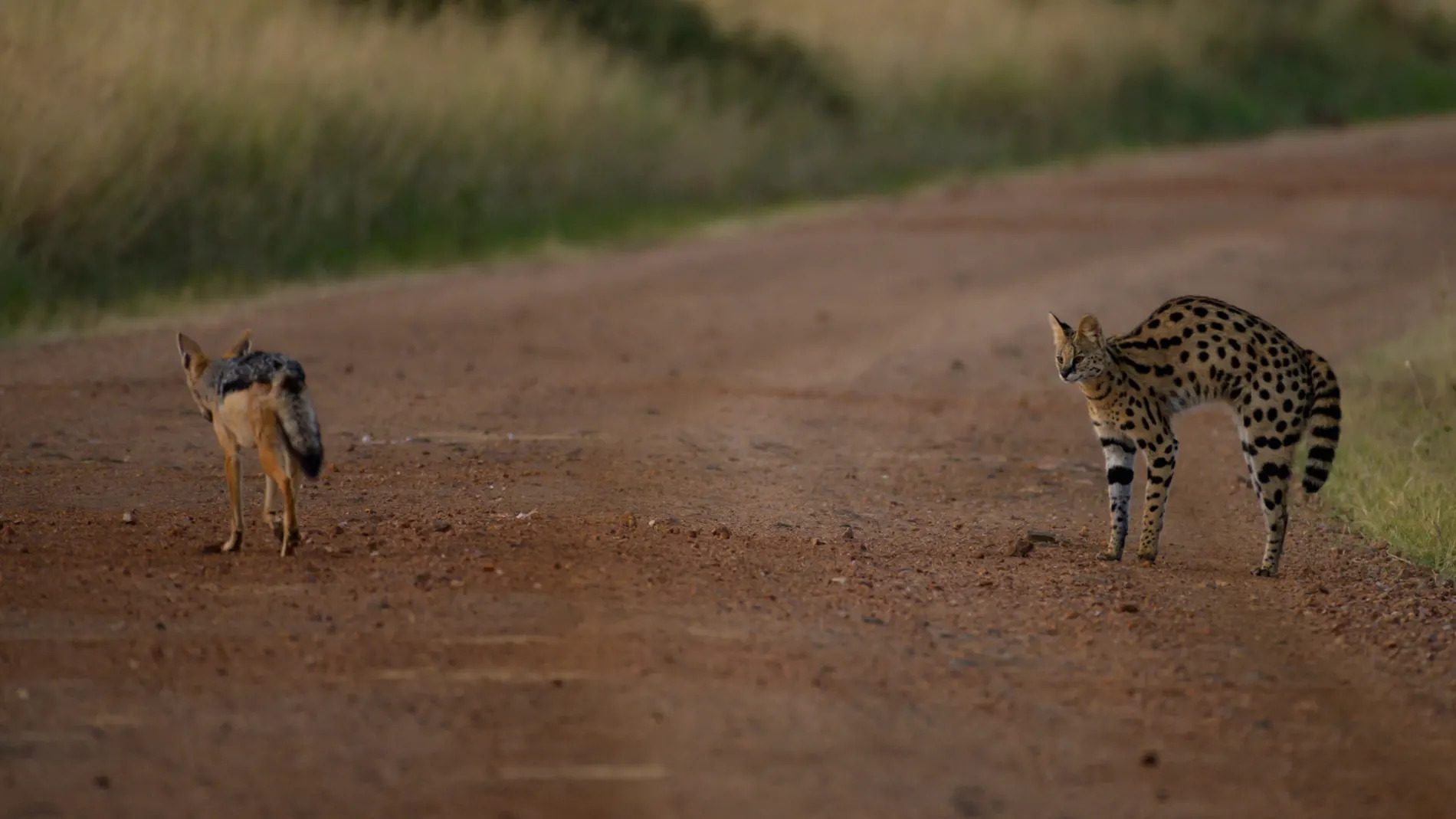
[f 5.6, 1/160, ISO 1600, -0.67]

[f 5.6, 1/160, ISO 1600, -0.67]
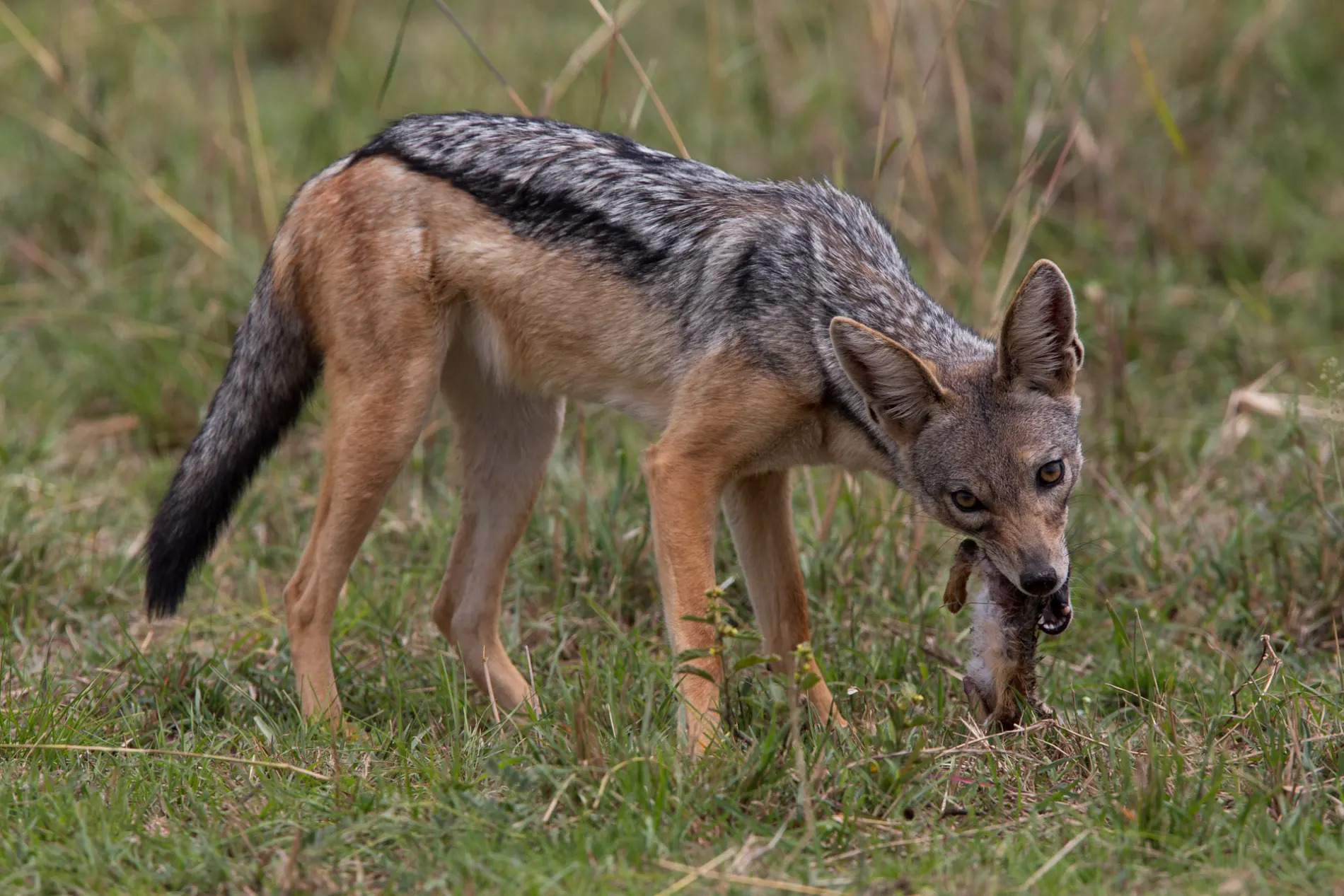
That wasn’t to be my only unusual jackal sighting of the week. A few days later, whilst driving around, I stumbled across a single jackal making a meal of a baby hare. [f 7.1, 1/2000, ISO 400, -0.67]

Not a sight for the squeamish, the jackal made light work of the small hare. First, he crushed it with his teeth before swallowing it whole. [f 7.1, 1/1600, ISO 400, -0.33]
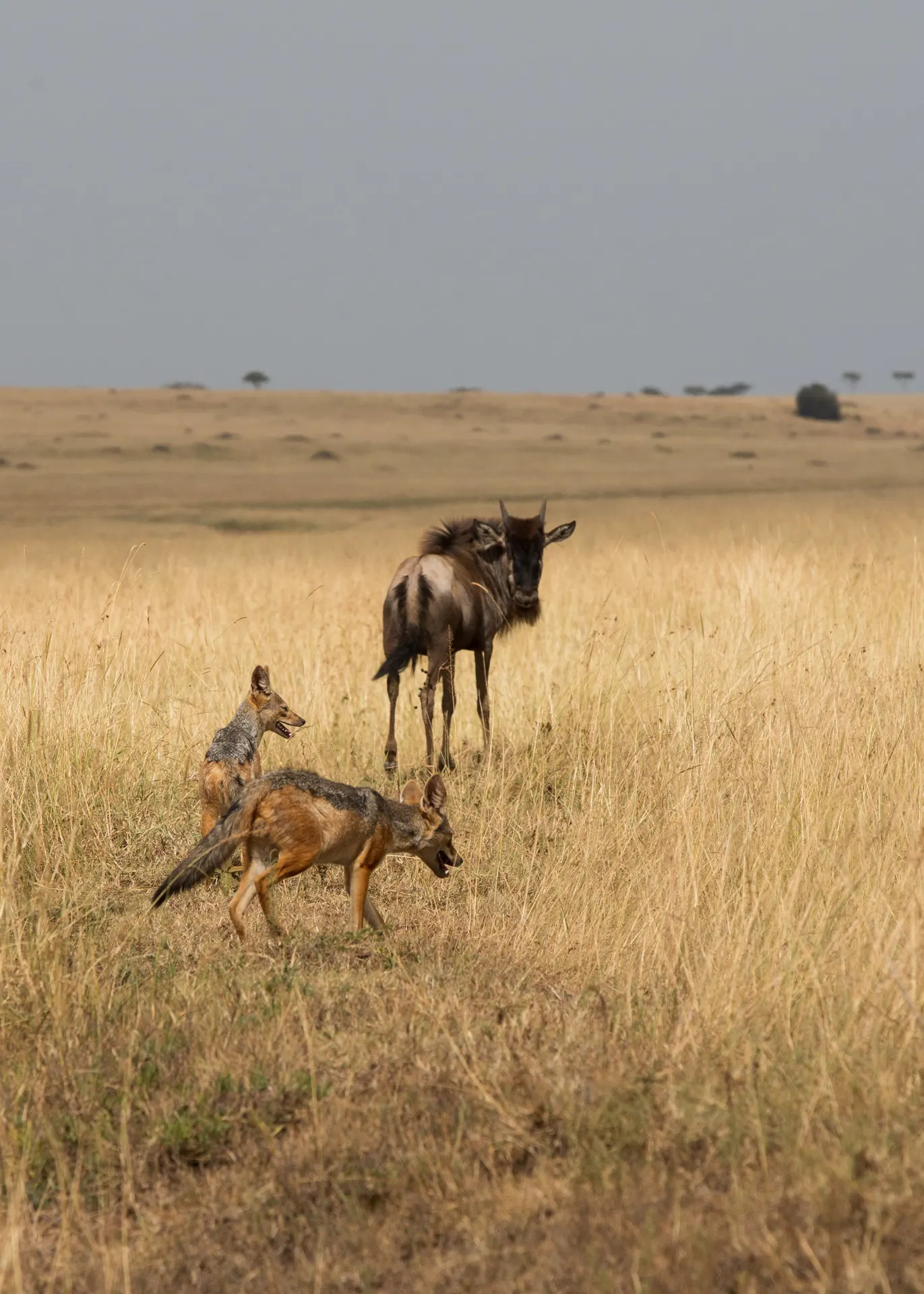
I watched in disbelief as a pair of jackals pursued a young wildebeest calf that had been separated from the herd. The two jackal were punching far above their weight, but they were simply trying to run the poor young wildebeest down. Eventually after watching for a good half hour, the slow, drawn out, chase continued into the long grass and I lost sight of them all, but a rare event to witness nevertheless. [f 9.0, 1/1000, ISO 320]
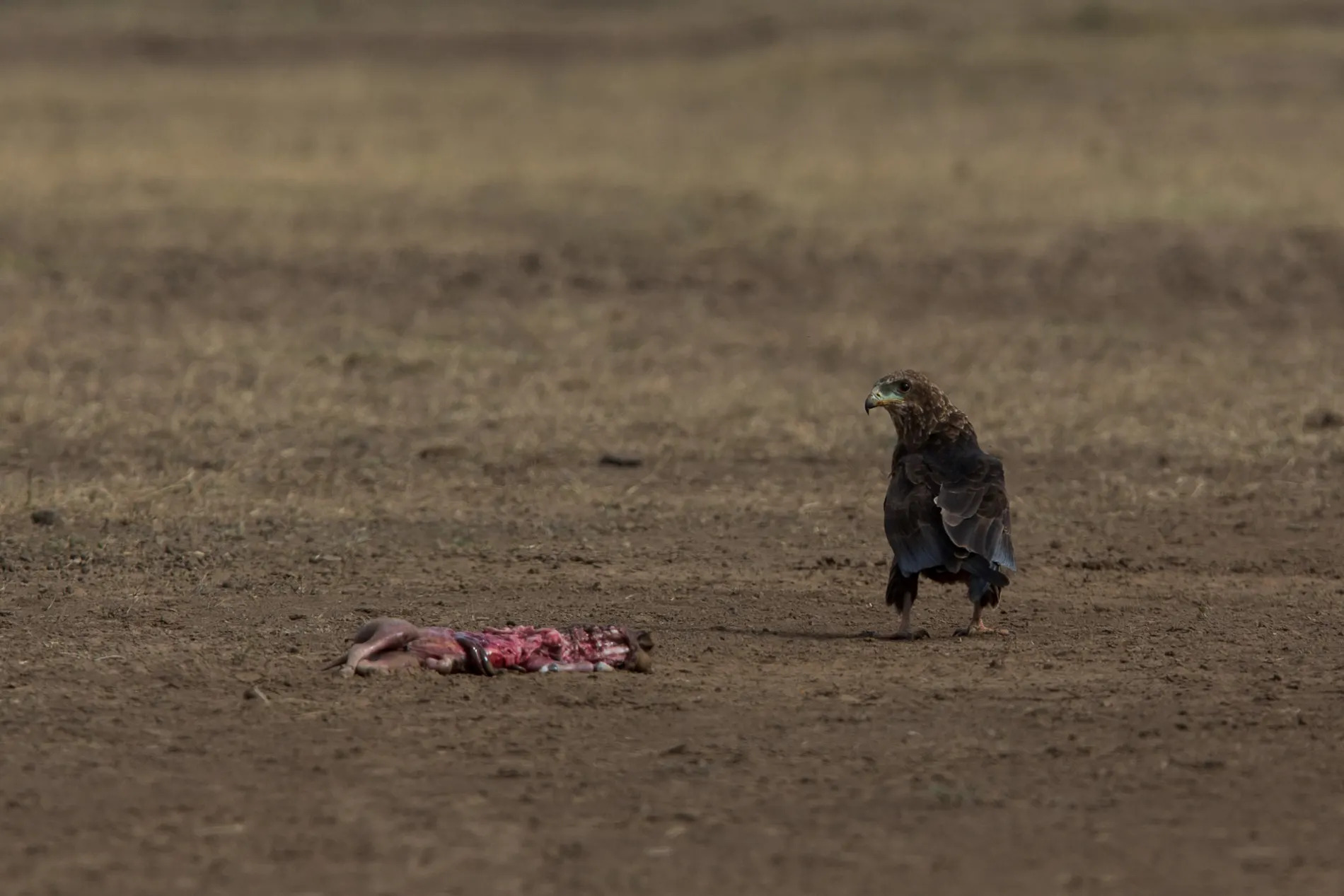
The drama wasn’t going to end there. Hours later I came across a juvenile bateleur eagle scavenging on a carcass. The bird of prey was obviously nervous, so I had to park about a hundred yards away so as not to chase it off. Eventually, satiated, the bateleur left its quarry and took flight. This allowed me to move in closer to inspect what it was. My heart sank as I realised it was the fetus of a zebra. Nature can be so cruel. [f 5.6, 1/250, ISO 200, -0.67]
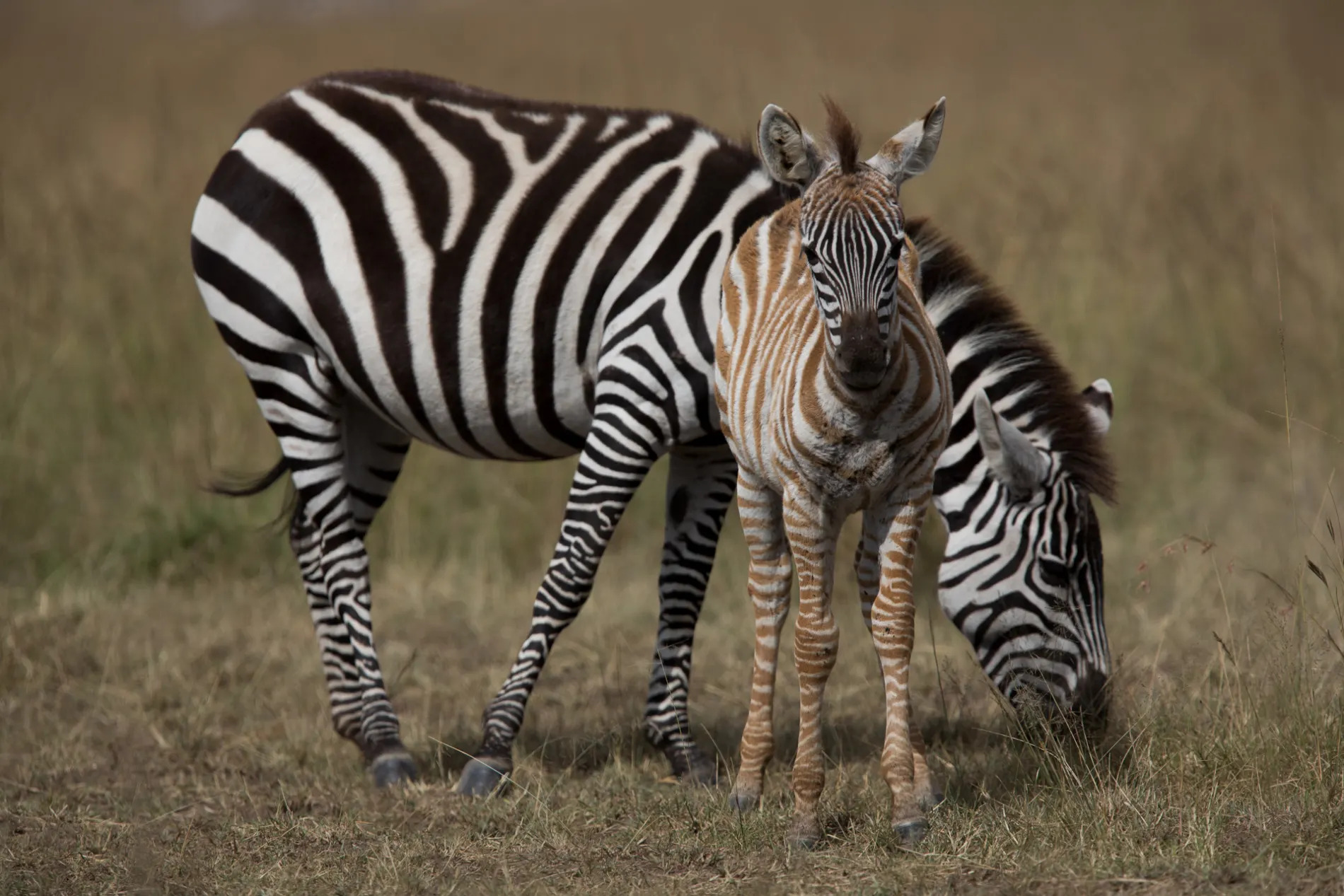
Fortunately, the mood was restored when we came across the most deliciously cute baby zebra and its mother. I just loved the milk chocolate brown colour of the foal. [f 5.0, 1/2500, ISO 125, -0.33]
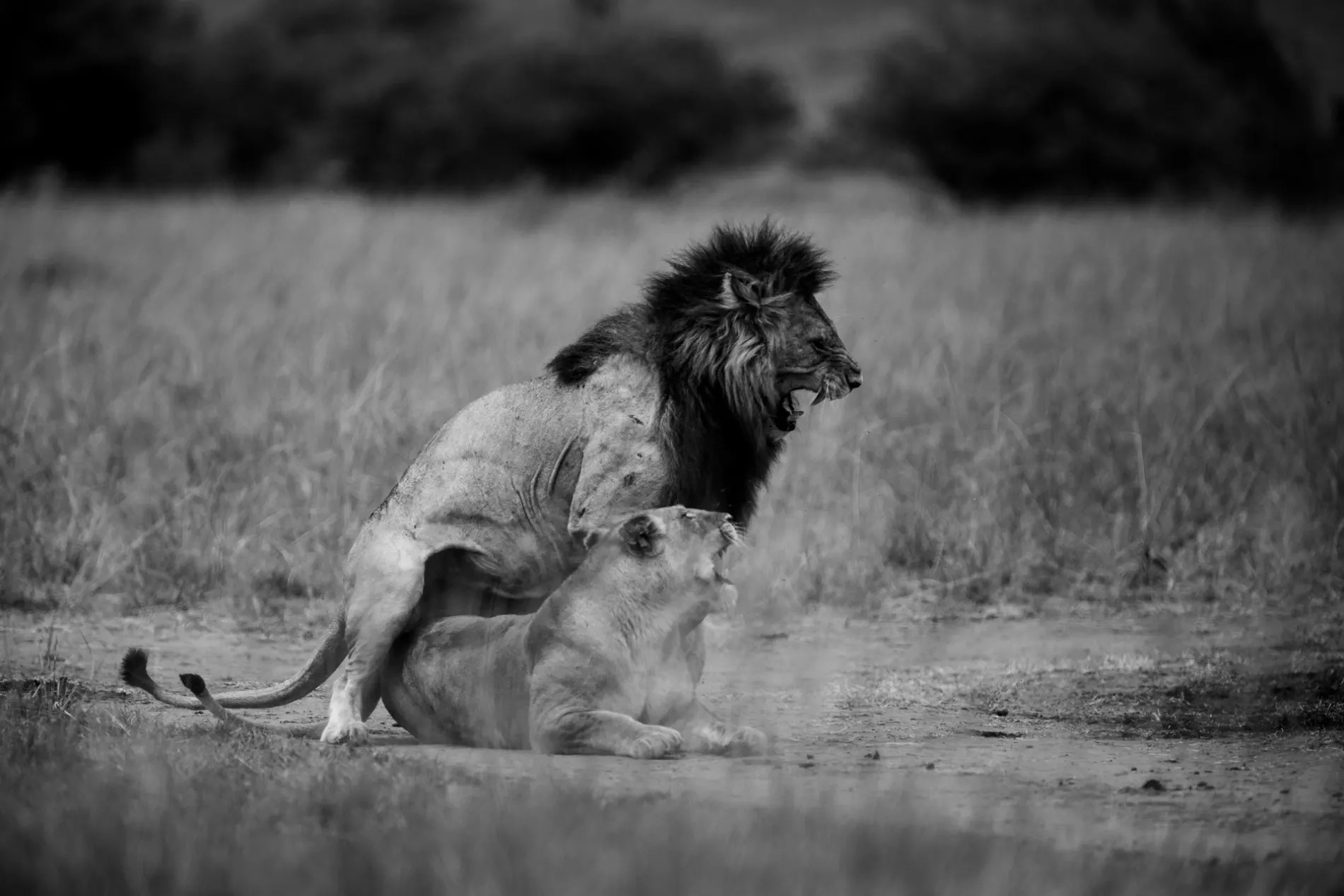
I don’t often venture across the river into the Greater Mara, but this week I decided to take a long drive. I was delighted to come across a mating pair of lion. Upon finding them, I had seconds to get to my camera and to shoot off a burst of shots. The settings were not ideal, but certainly good enough to capture the story. [f 4.0, 1/8000, ISO 640, +0.33]
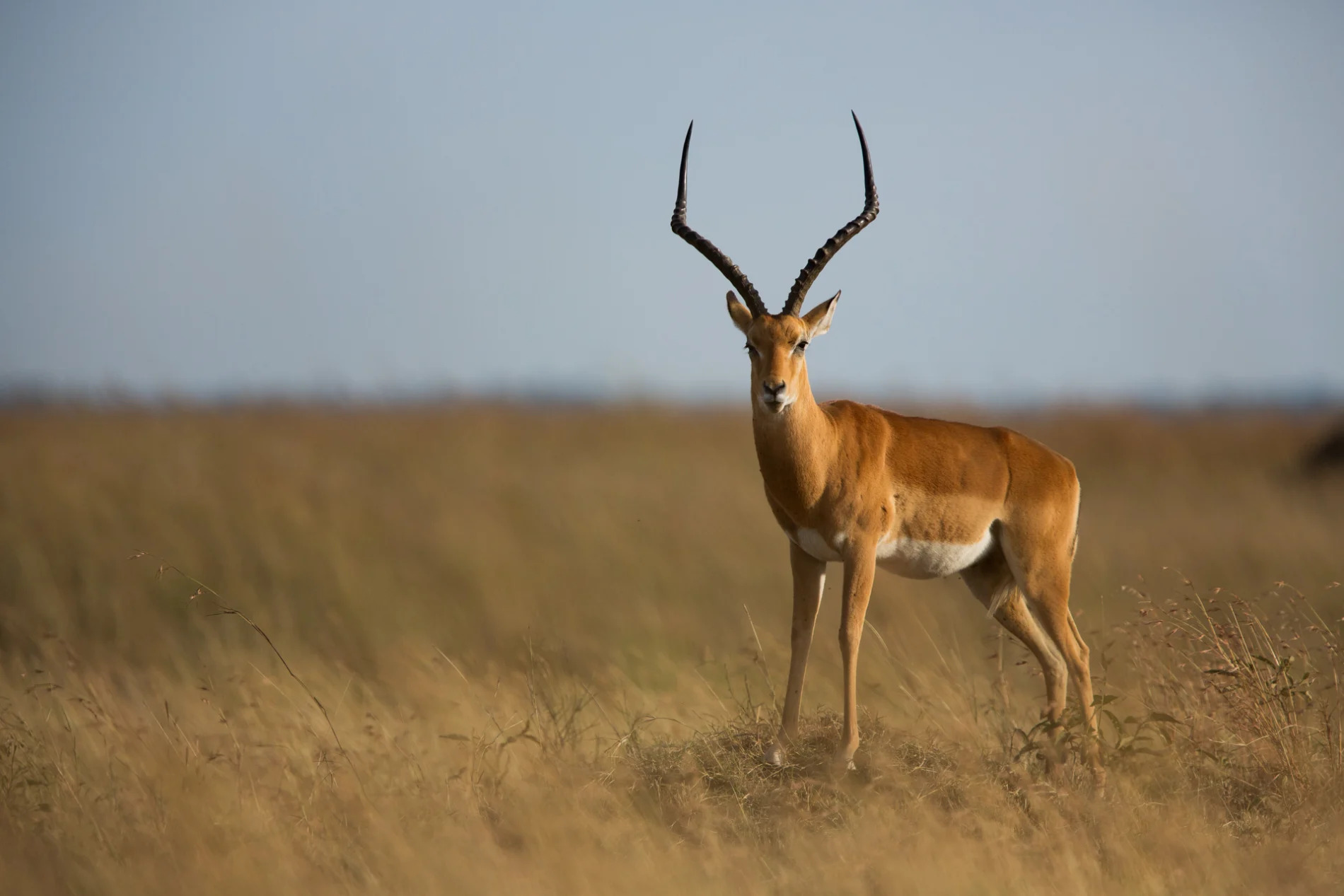
Photographs don’t always need to have drama, or be of charismatic animals. Sometimes it’s just about light and composition and encompassing the natural beauty. [f 4.0, 1/4000, ISO 320, -0.33]

Members of the Sausage Tree Pride are growing up fast. [f 4.0, 1/2000, ISO 320, -0.67]
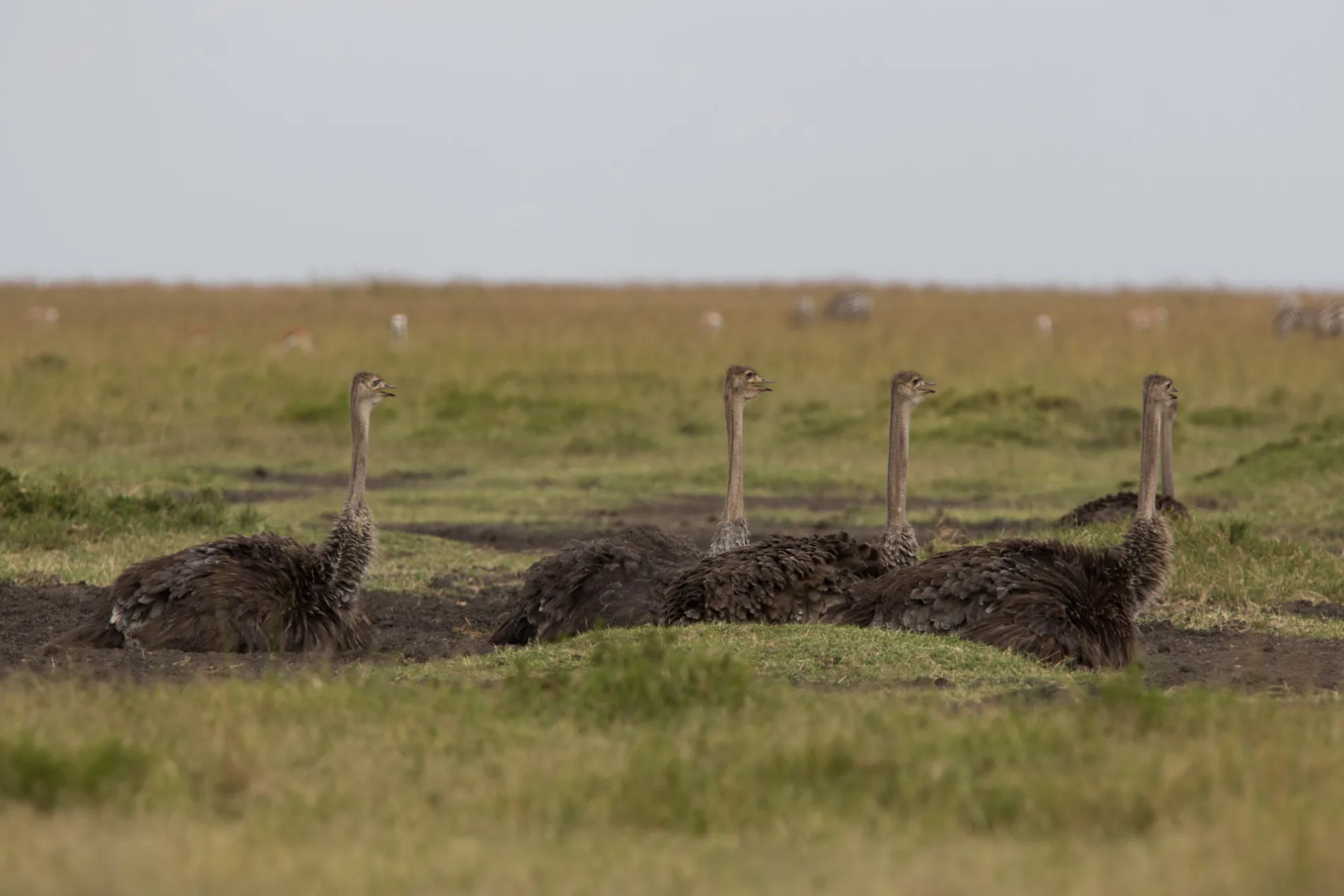
Four female ostriches rest during the heat of the day. [f 5.6, 1/1000, ISO 200, -0.67]
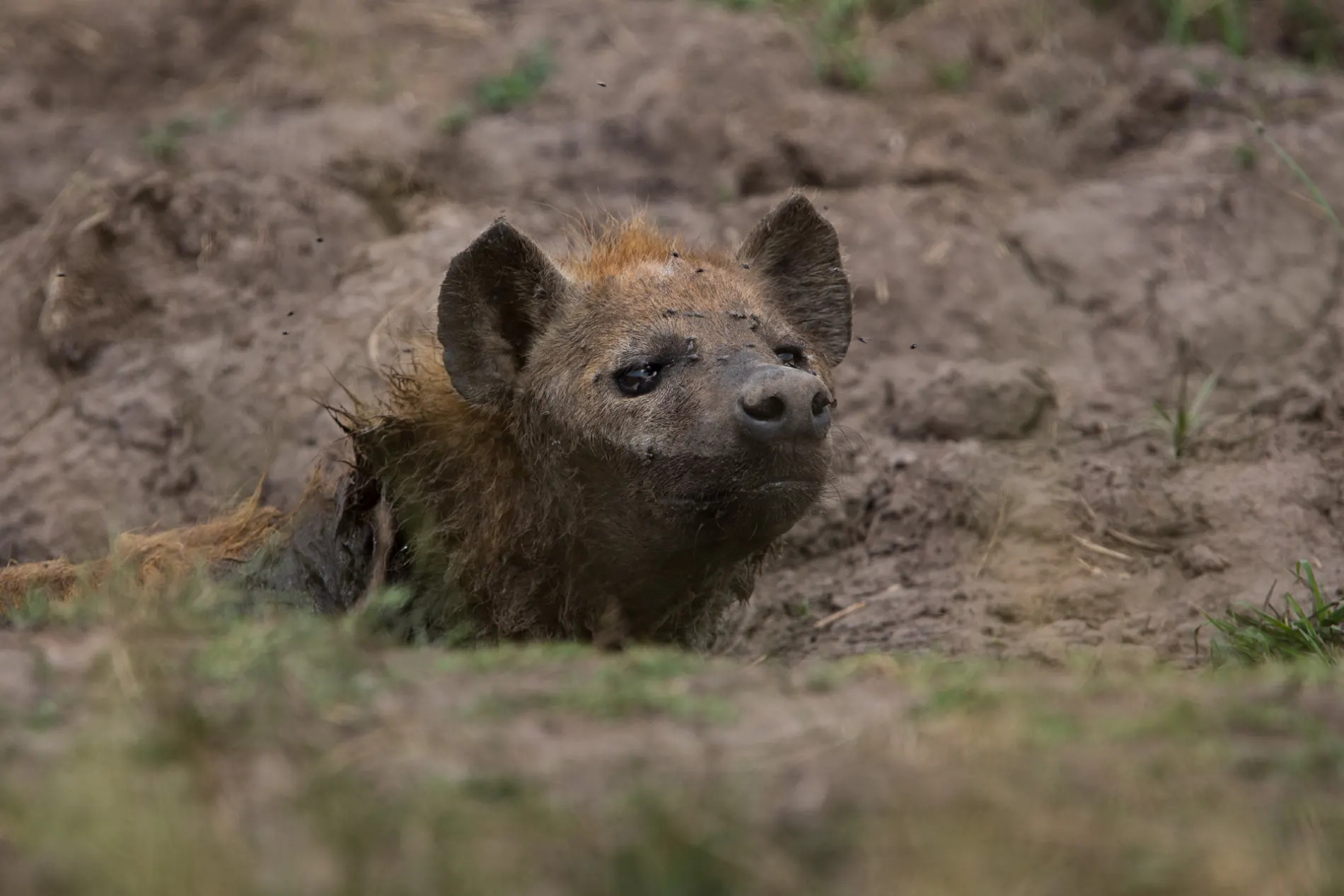
Nearby, a spotted hyena also opts for some relaxation, this time, however, deciding to rest in a mud pool. [f 5.0, 1/500, ISO 125, -0.33]
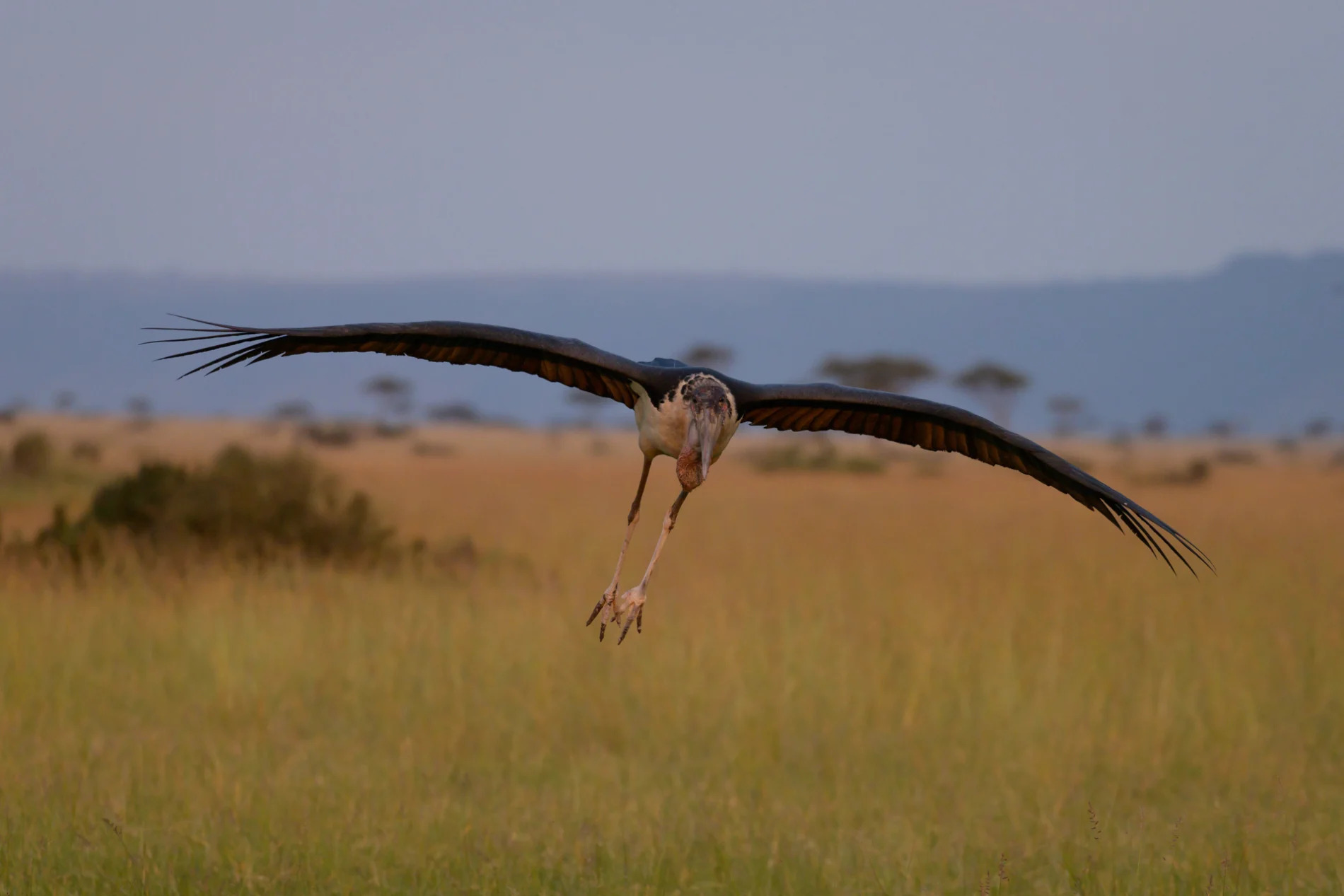
A marabou stork comes in to land. [f 5.6, 1/1000, ISO 2000, -0.67]
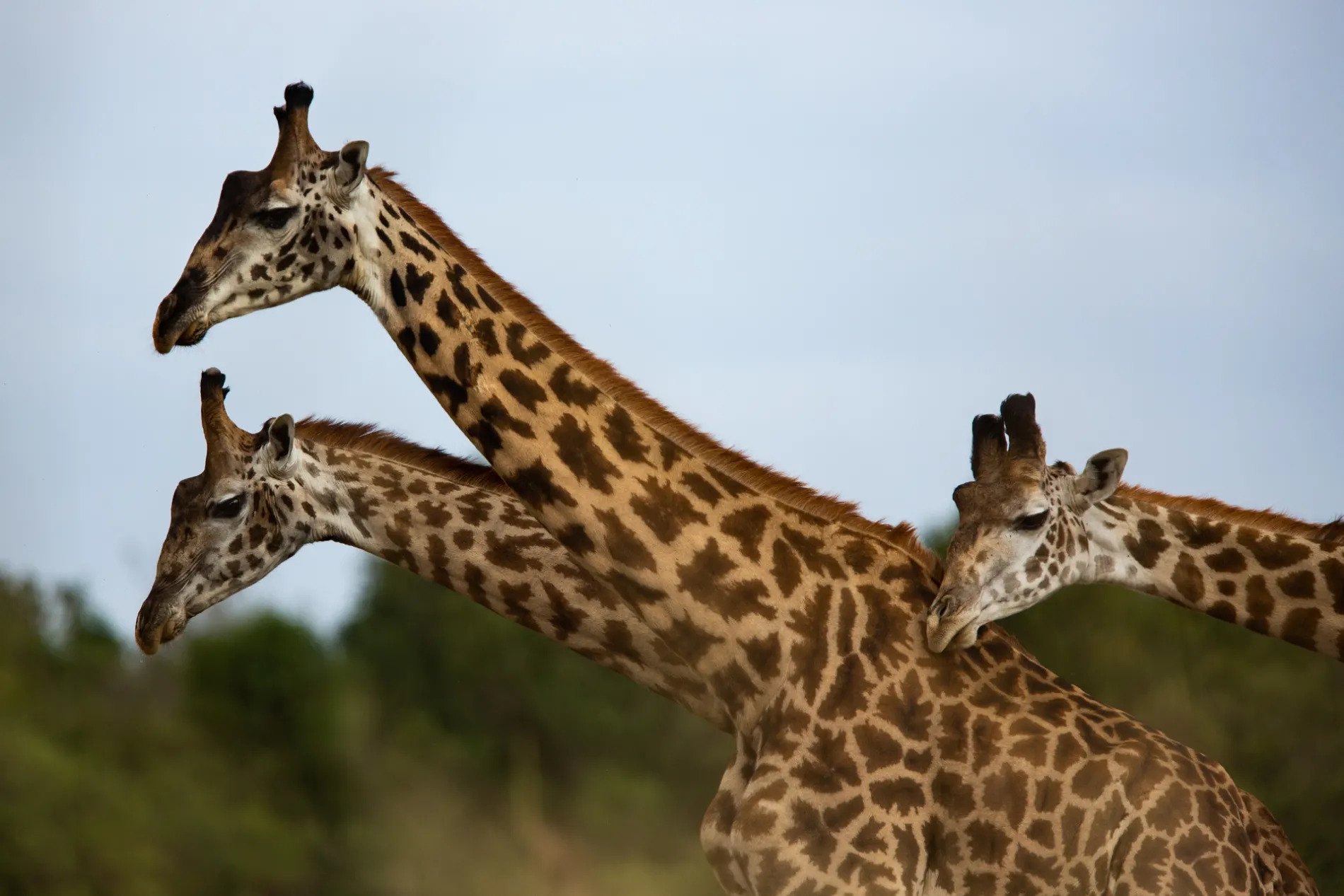
I’m always on the lookout for creative ways to photograph giraffe. [f 4.0, 1/2500, ISO 500]
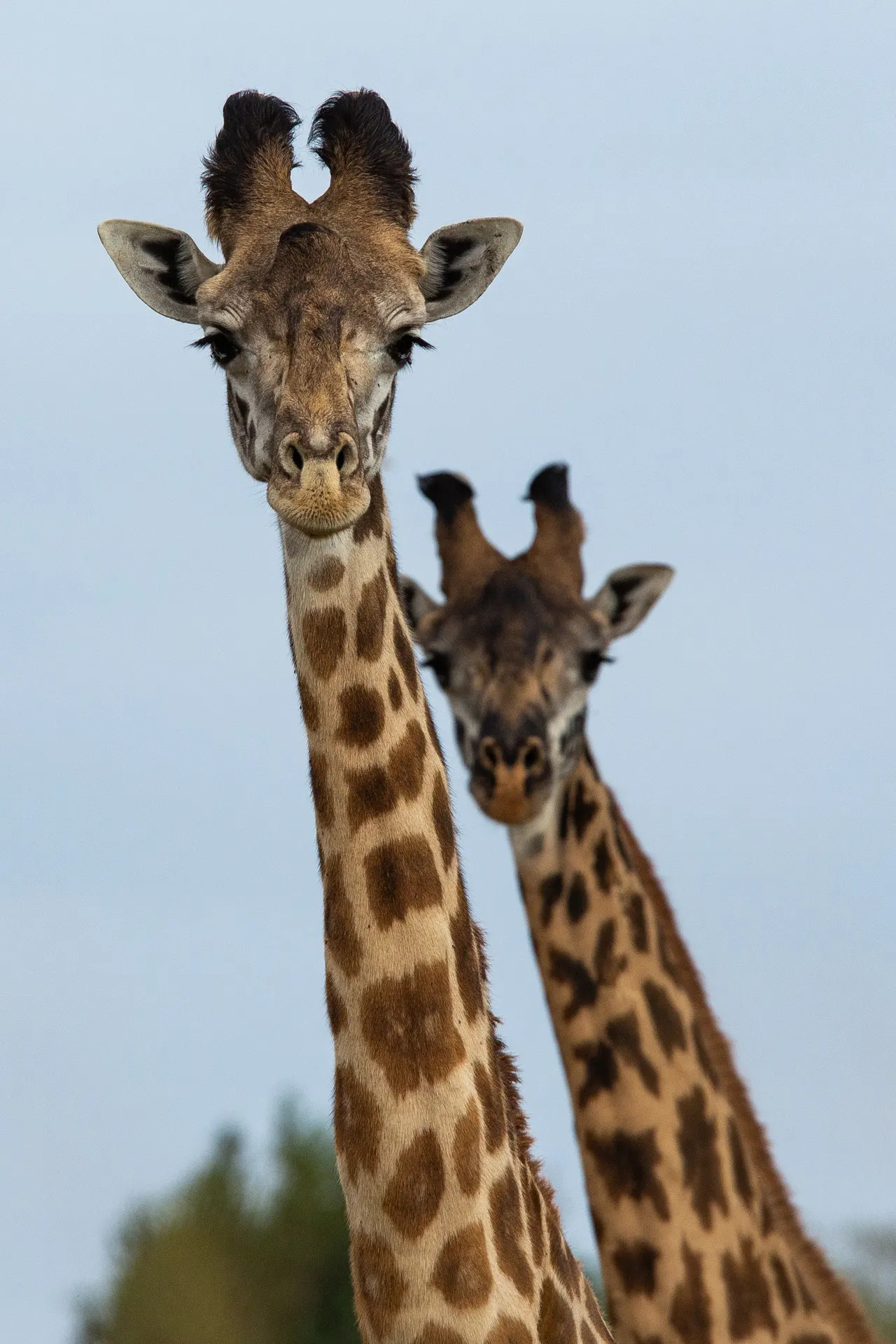
[f 7.1, 1/1250, ISO 500, +0.33]

[f 5.6, 1/1000, ISO 200, -0.33]
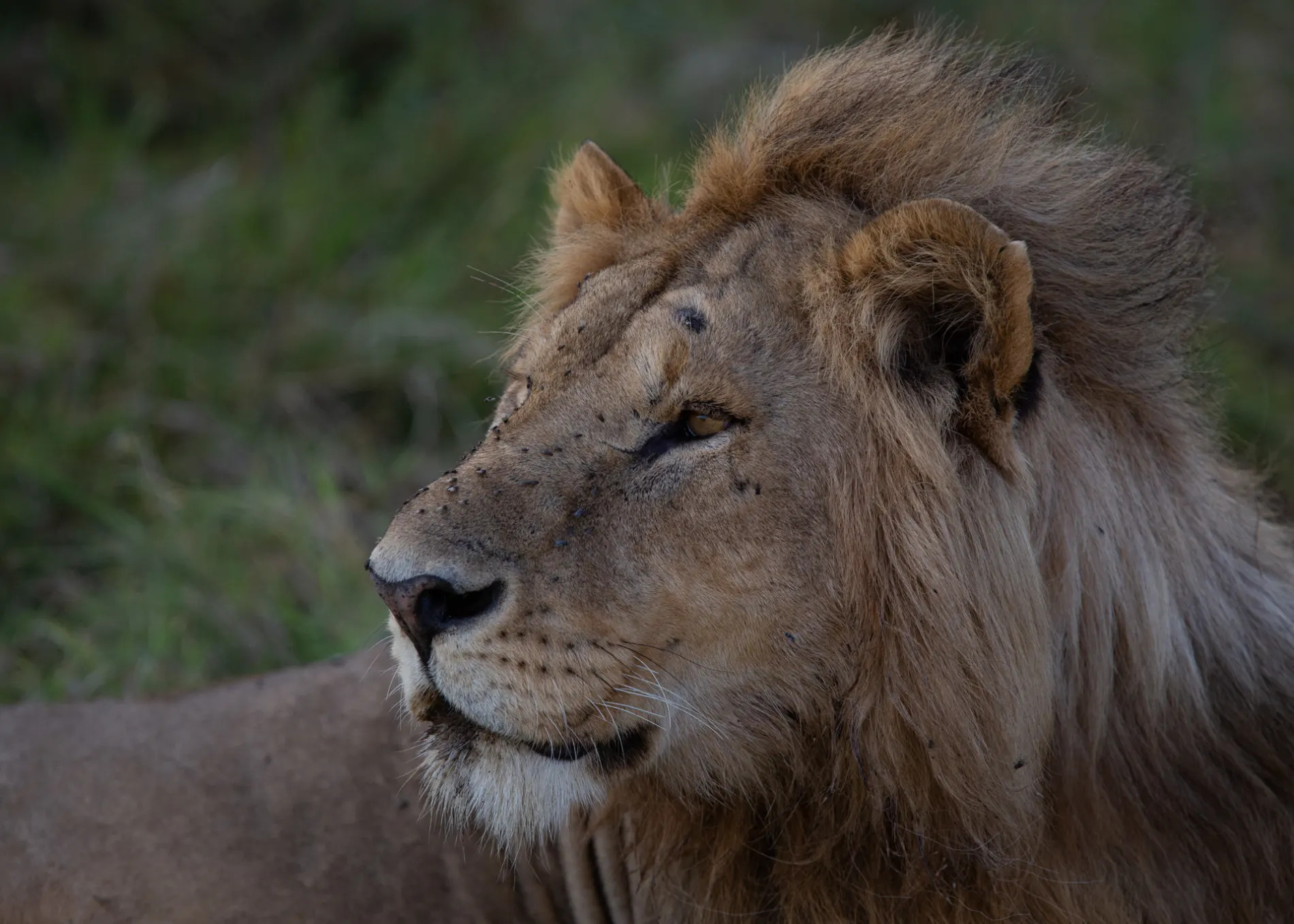
There has been lots of talk on social media about the current health and status of Prince Mkia, the half tail male lion that has seemingly set up territory at Mugoro drainage. There were rumours that he was on his deathbed. I can assure you that he has taken a beating, but he is fine – these animals are resilient and strong. He has the makings of a future Mara king. [f 4.5, 1/1000, ISO 400, -0.67]

By no means a good shot, but I have included this as it shows a lot of characteristic identifying features of a new male we have started seeing along the Kenyan/Tanzanian border. He has a huge tear in his upper lip, cuts on his tongue, and a broken left canine. I wonder what his story is? [f 5.6, 1/500, ISO 400, -0.33]

Herds of wildebeest and zebra continue to stream into the Mara Triangle. [f 11.0, 1/320, ISO 320, -0.33]
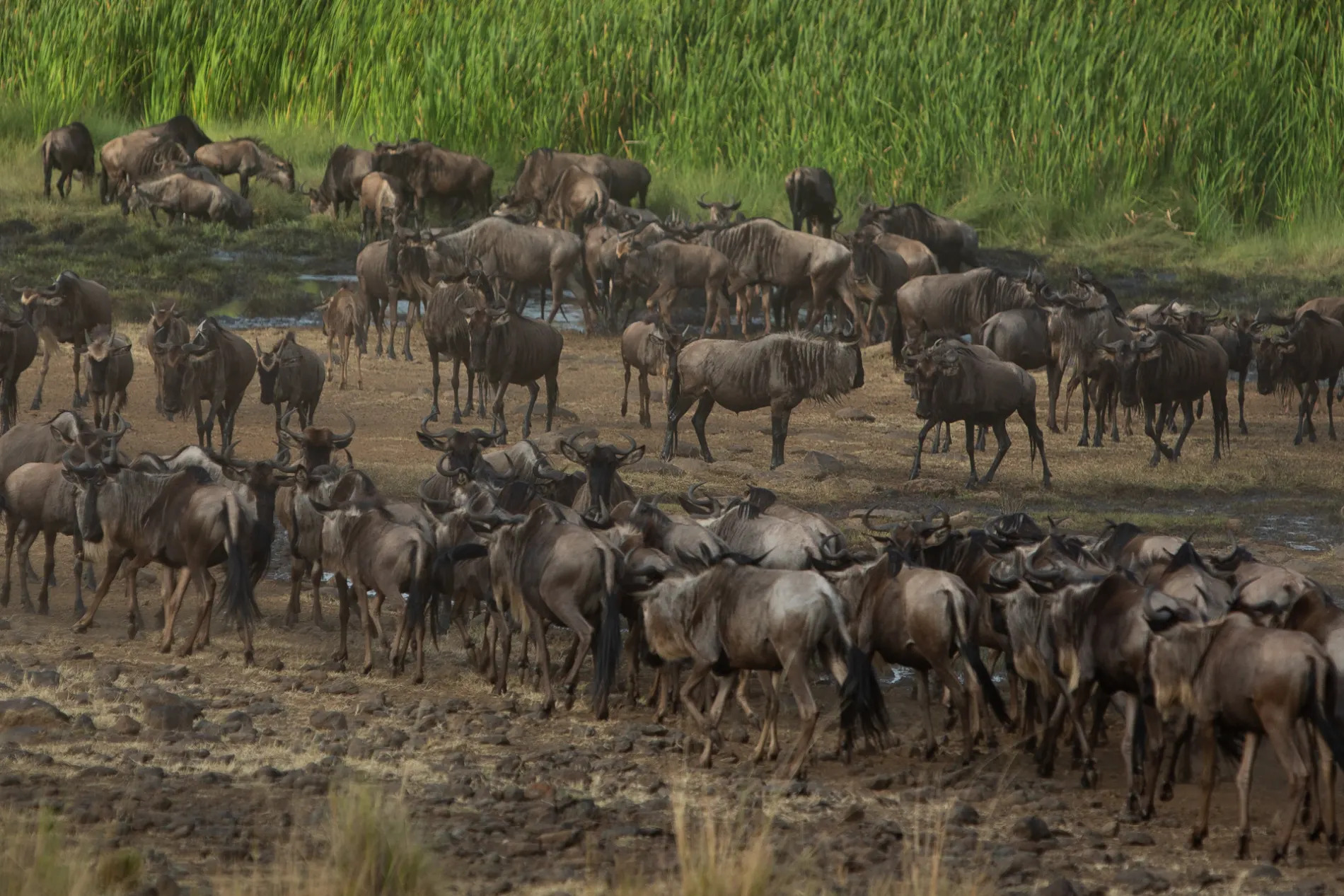
The ‘Salt Lick’ is a popular spot as the massive herds are able to move into the natural spring to quench their thirsts. The road ahead is long and treacherous. [f 4.0, 1/1250, ISO 320, -0.33]
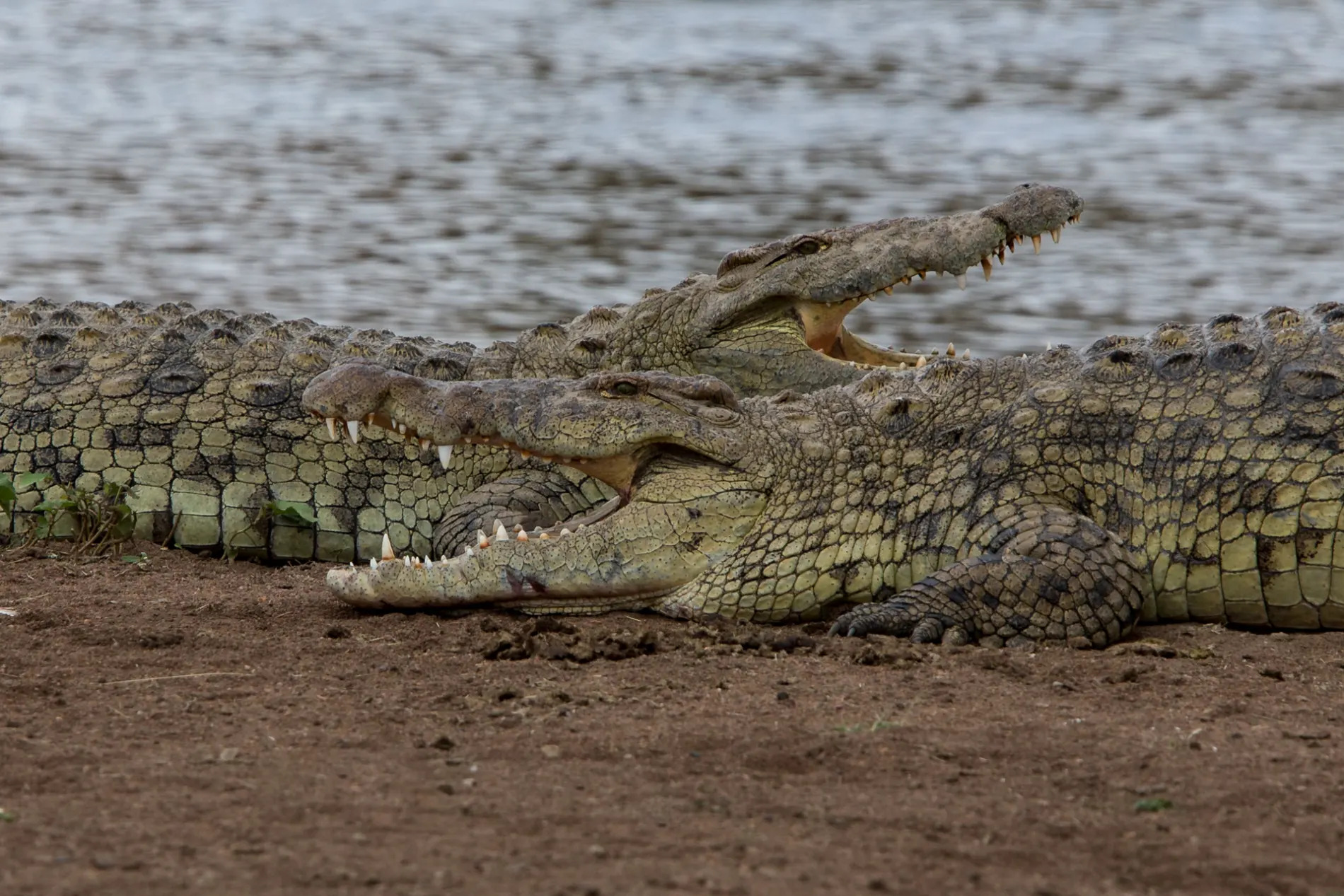
And drinking in the Mara River is far more dangerous. Gigantic Nile crocodiles sun themselves in the midday heat. It is their time of plenty. They have been waiting for months for this moment. [f 5.0, 1/1250, ISO 320, -0.33]
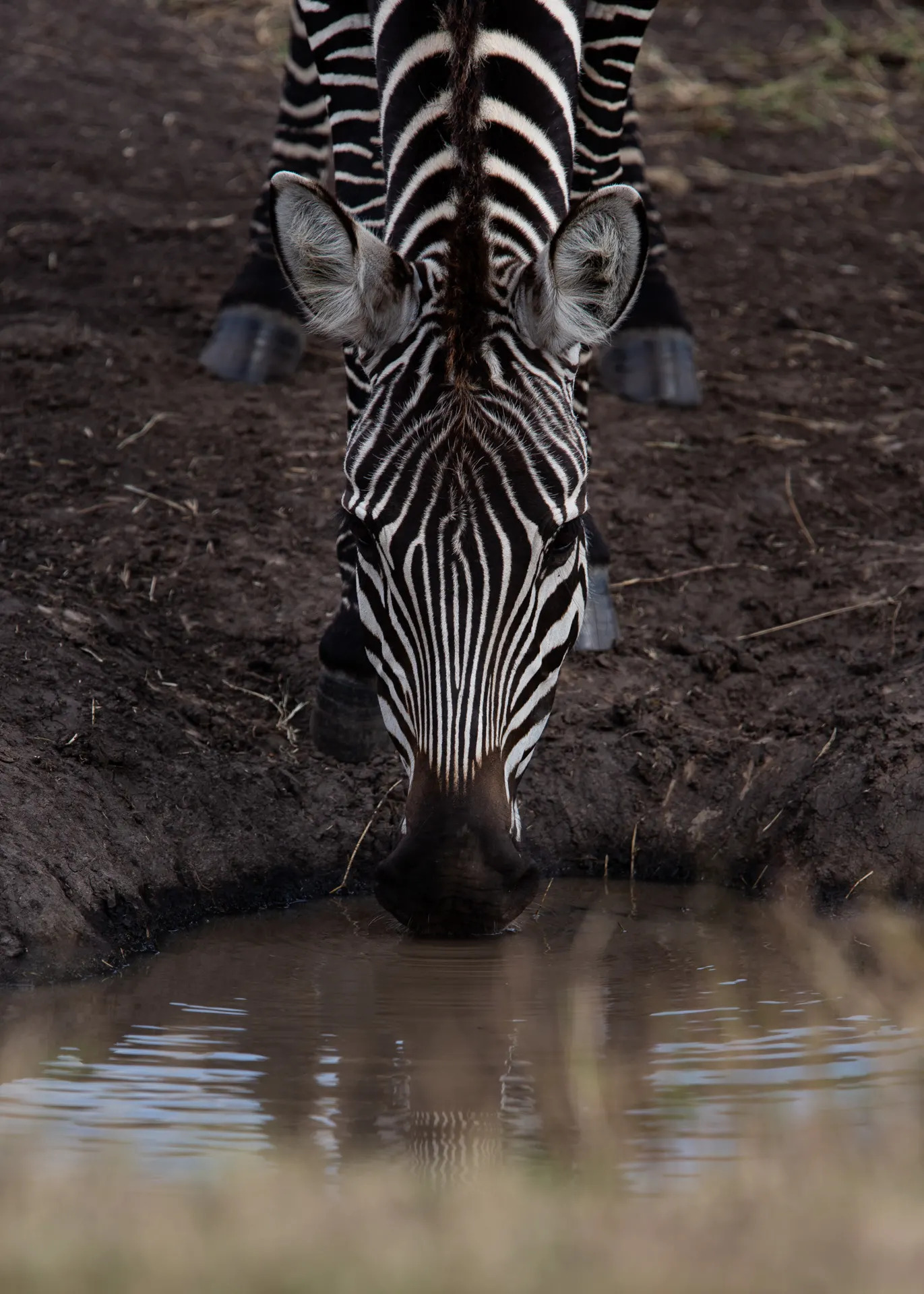
A sensible zebra drinks from a puddle. [f 5.6, 1/500, ISO 200, -0.67]

Same puddle, same zebra, different angle, and a very different result. [f 5.6, 1/500, ISO 200, -0.67]
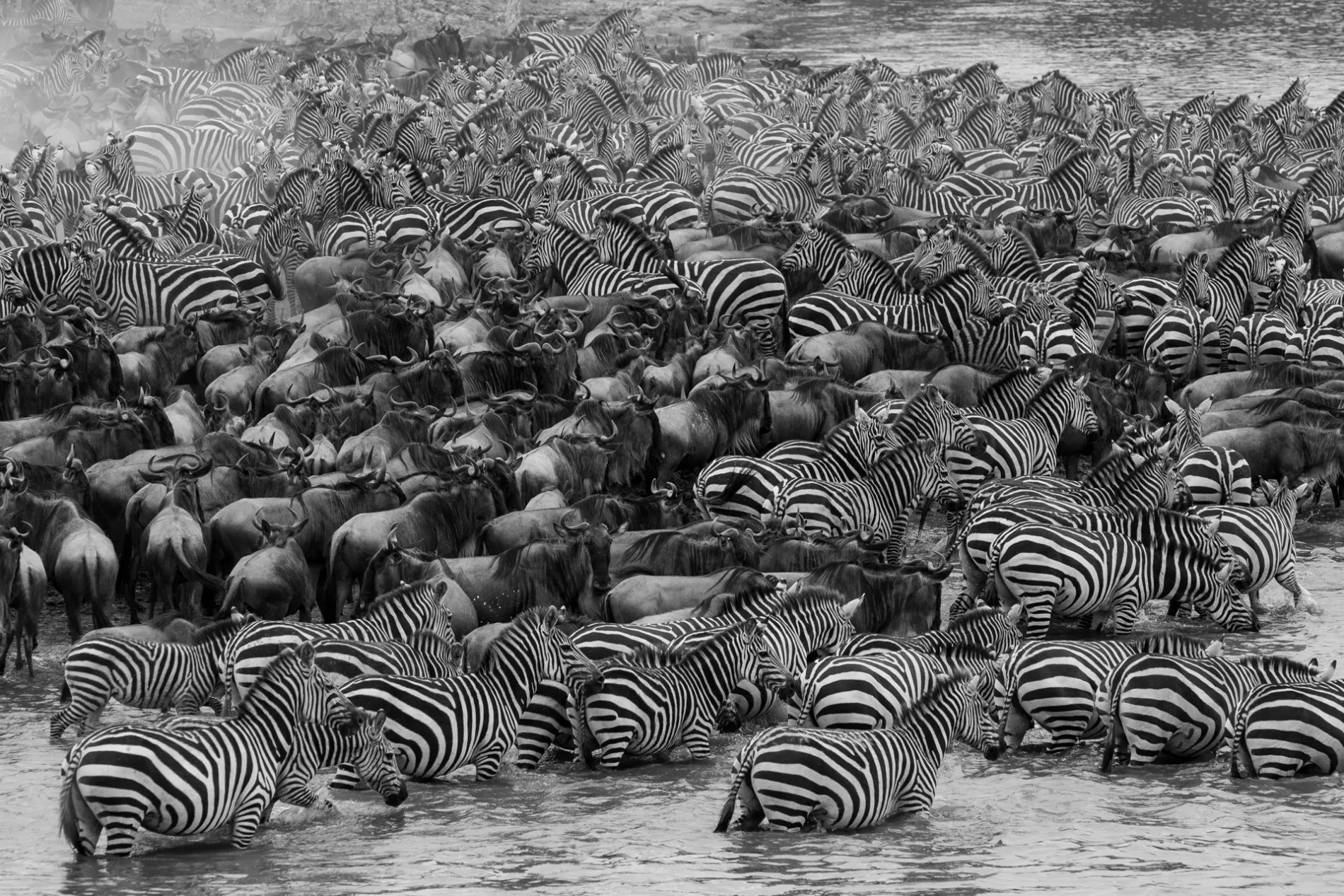
This week, the herds finally reached the infamous crocodile-infested waters found at the ‘Main’ and ‘Cul-de-sac’ crossing points. I was fortunate enough to witness one of these; one that ended up as one of the most extraordinary crossings I have ever seen. Thousands upon thousands of zebra stampeded the river. The wildebeest joined in – the dust was everywhere. Crocodiles were launching left, right and centre! For me this was the holy grail of river crossings. Now, I can sit back content that I have captured some rather epic crossing shots… but, what if tomorrow is better? [f 8.0, 1/320, ISO 800, -0.33]
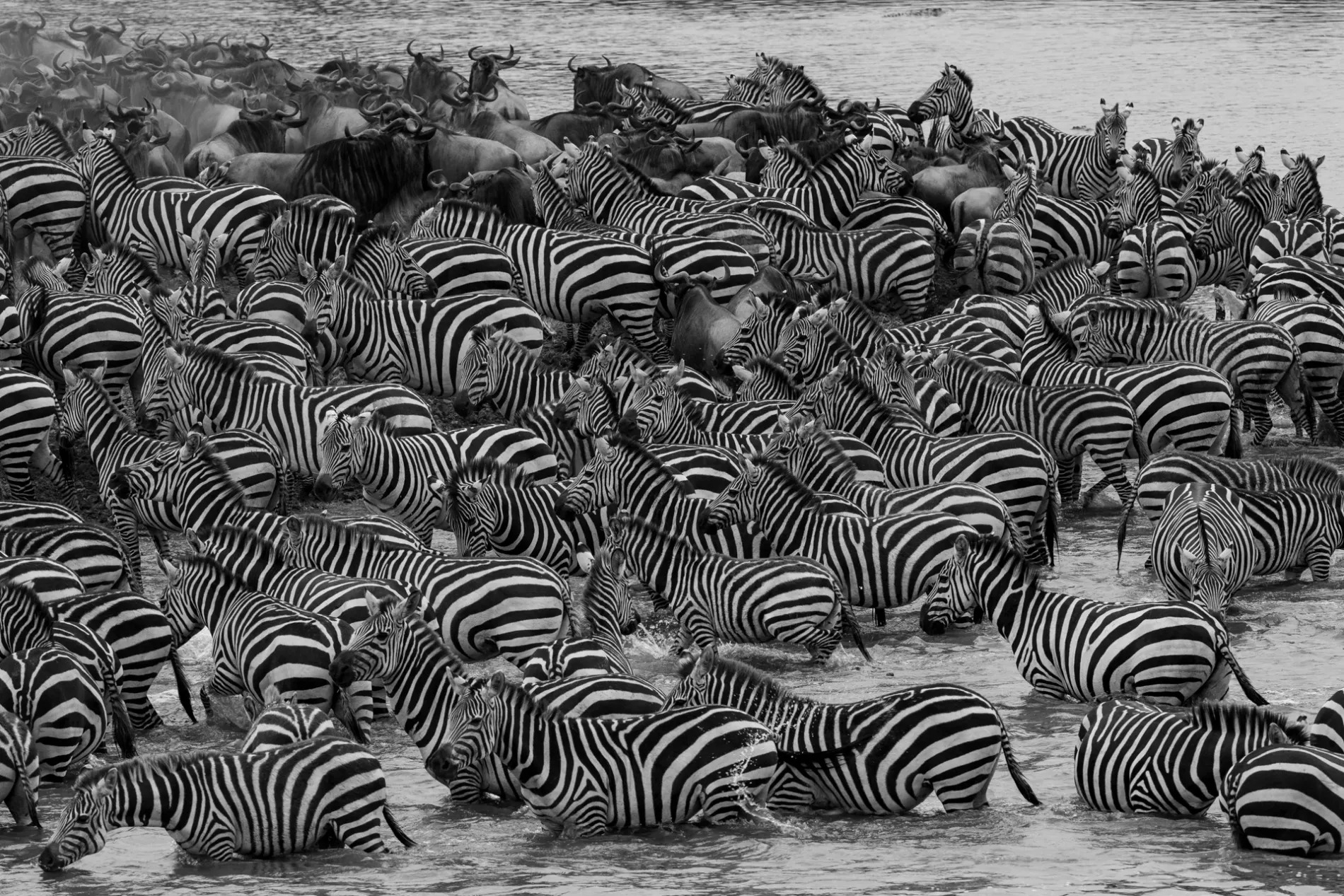
[f 8.0, 1/320, ISO 800, -0.33]
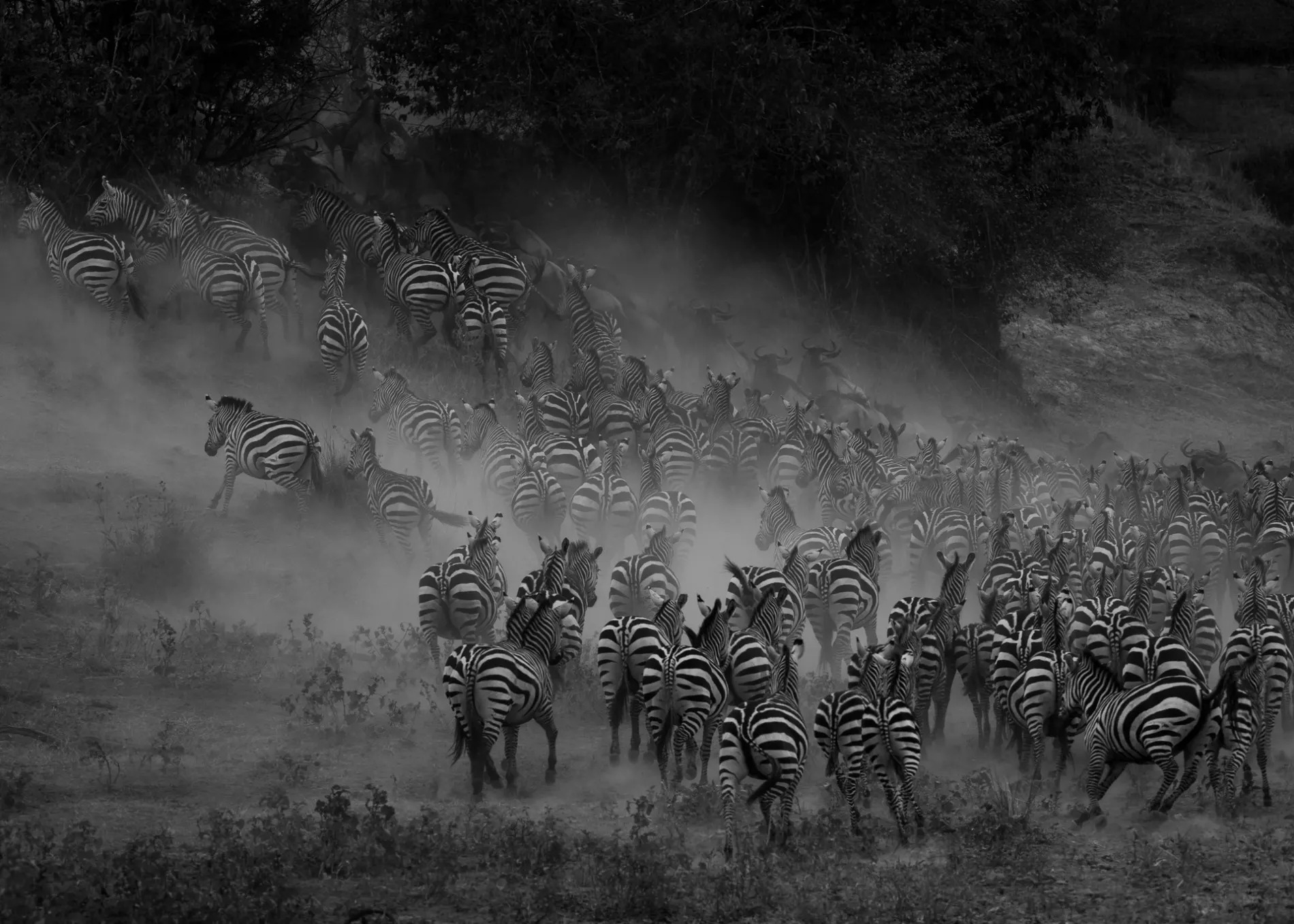
[f 8.0, 1/320, ISO 800, -0.33]
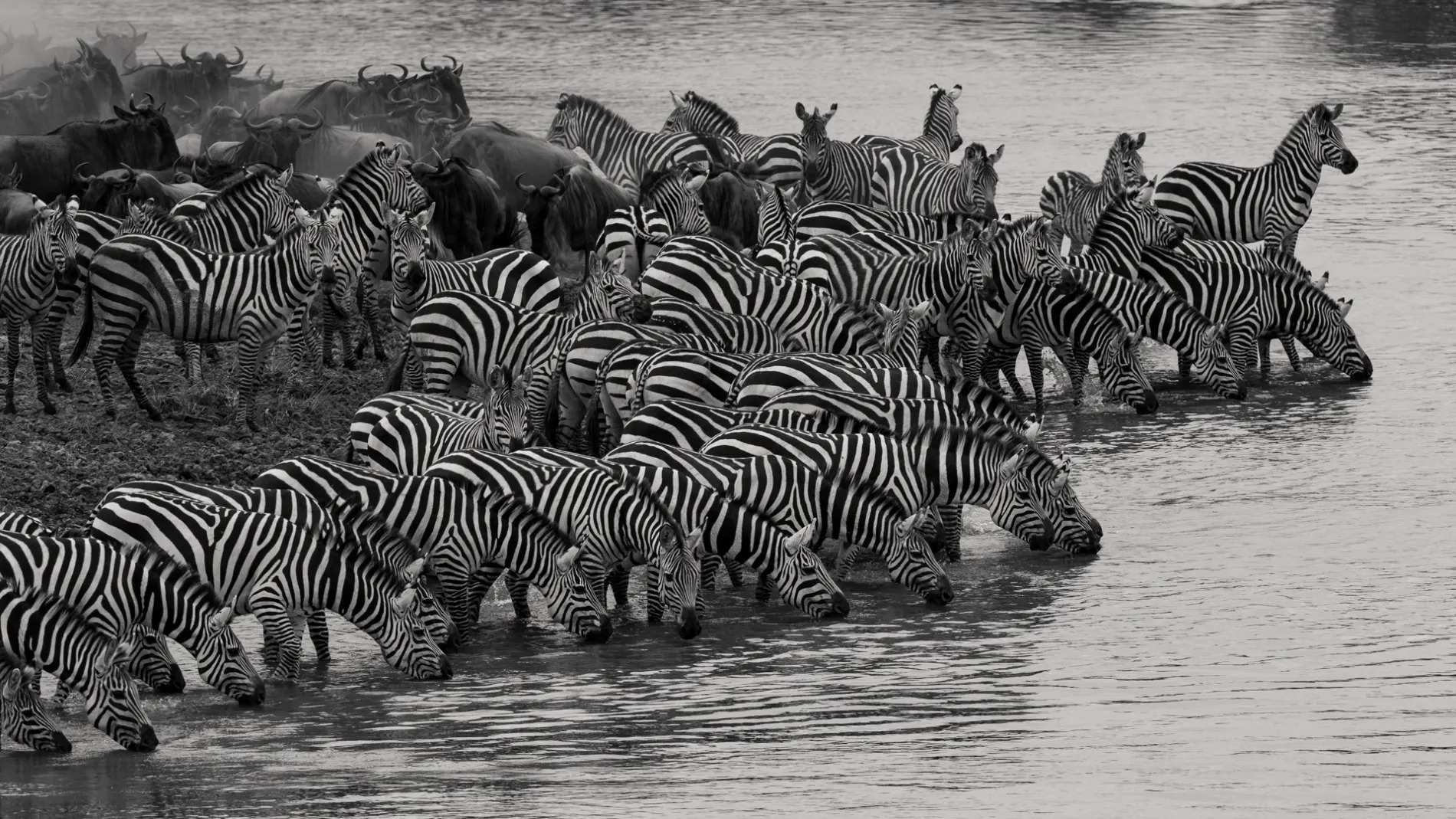
[f 8.0, 1/320, ISO 800, -0.33]

[f 8.0, 1/320, ISO 800, -0.33]
This Week a Year Ago (TWAA #28)
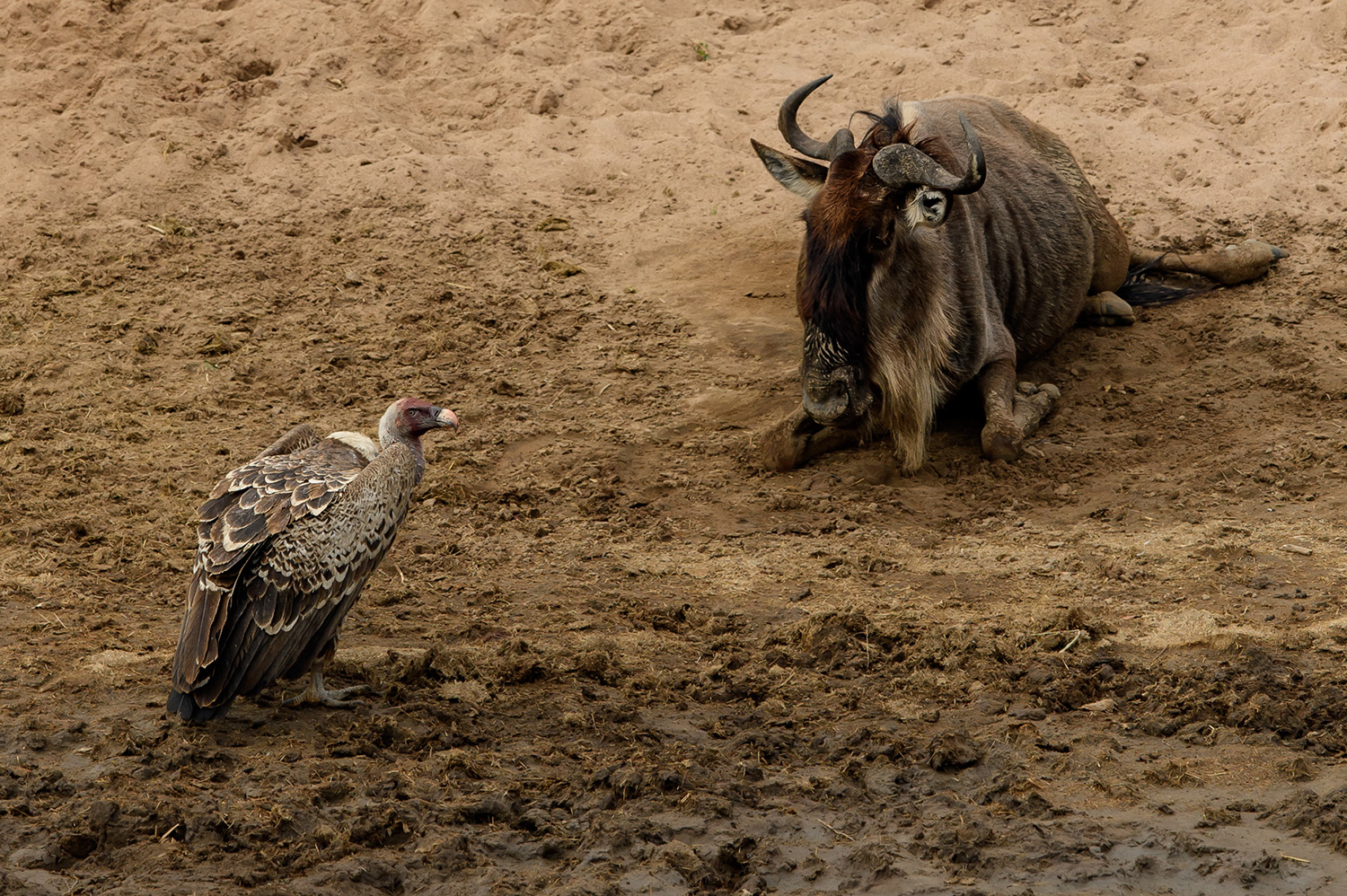
Vulture staring at wildebeest with broken leg The reality about the migration is that it can be incredibly brutal. This moment of a wildebeest staring death in the face was captured perfectly last year by guest contributor, friend and extended Angama family member, Graham Wood. [f 5.6, 1/1000, ISO 560].
TAGGED WITH: Angama Mara, Great Migration, Wildlife Photography, vultures, Giraffe, This Week At Angama, Lions of the Mara, Angama



COMMENTS (2)
Shän Biesman-Simons
August 19, 2019I will never forget that crossing and I know we were so lucky to see this one and the bonus was to have you with us to create superb photographic memories.
REPLYNicky Fitzgerald
August 20, 2019Hi Shän
REPLYThank you so much for coming to stay with us and I am delighted to read that you witnessed a crossing with Adam.
Warm regards from the lovely Mara
Nicky